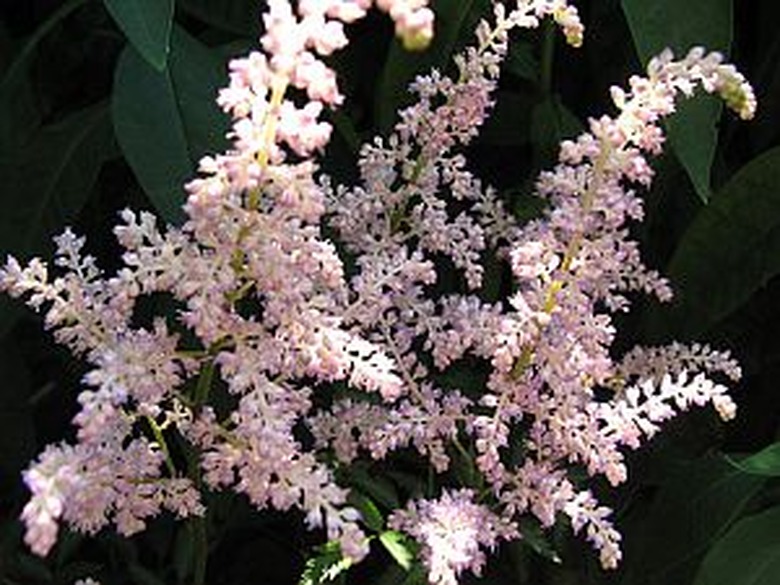How To Winterize Astilbe
Things Needed
- Astilbe plants
- Garden shears
- Mulch (straw, shredded bark, pine boughs)
Warning
Do not use leaves for mulch because they may compact and weigh too heavily on the roots. This may lead to root decay.
Winterizing perennial plants is one of the last things a gardener must do before the cold winds start to blow in earnest. Herbaceous perennials are perennial plants that die down to the soil level each autumn and grow new stems and leaves the next spring. Astilbes are one example of an herbaceous perennial grown in many home gardens. To winterize astilbes and other herbaceous perennials, a gardener removes all stems and foliage down to the soil level in the autumn and tucks the roots in for the winter under a blanket of mulch.
Step 1
Use the garden shears to cut the astilbe stems and foliage back to approximately 3 to 4 inches above the soil level. This will improve the appearance of the garden and help to prevent diseases from beginning over the winter months. Leaving foliage on herbaceous perennials also contributes to crown damage due to the soil freezing and thawing over the course of the winter. Discard the removed foliage in a compost bin.
- Winterizing perennial plants is one of the last things a gardener must do before the cold winds start to blow in earnest.
- To winterize astilbes and other herbaceous perennials, a gardener removes all stems and foliage down to the soil level in the autumn and tucks the roots in for the winter under a blanket of mulch.
Step 2
Cover the soil over the roots with a 2-inch layer of mulch to insulate the roots during the winter months. Add the mulch at about the time of the first hard freeze. Laying mulch down earlier could contribute to root decay and invites rodents to winter among the roots.
Step 3
Remove the mulch in the spring as soon as the weather warms slightly and the soil warms. This will ensure that the roots are not overly warm in the spring (which could also lead to decay).
